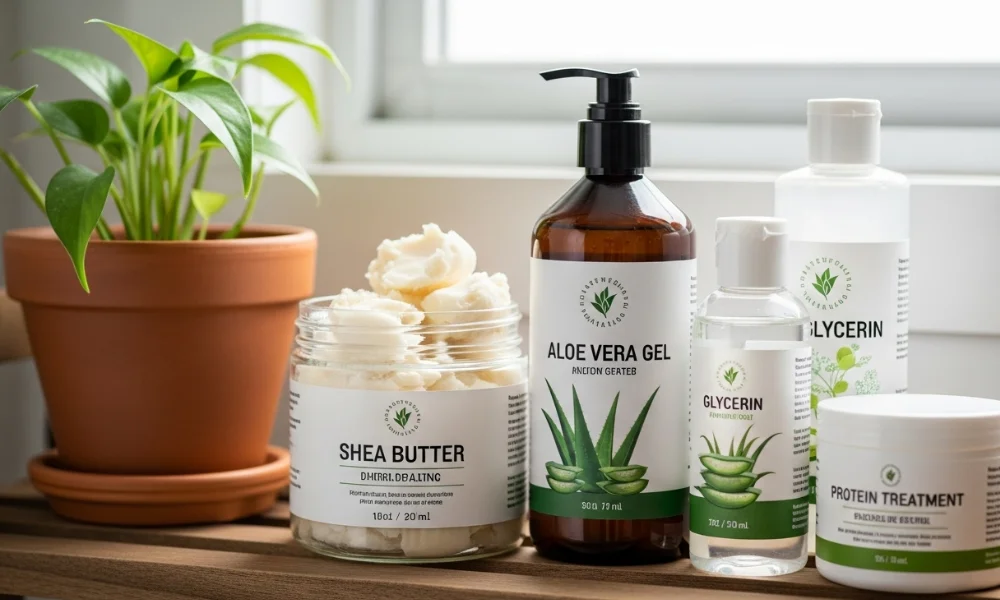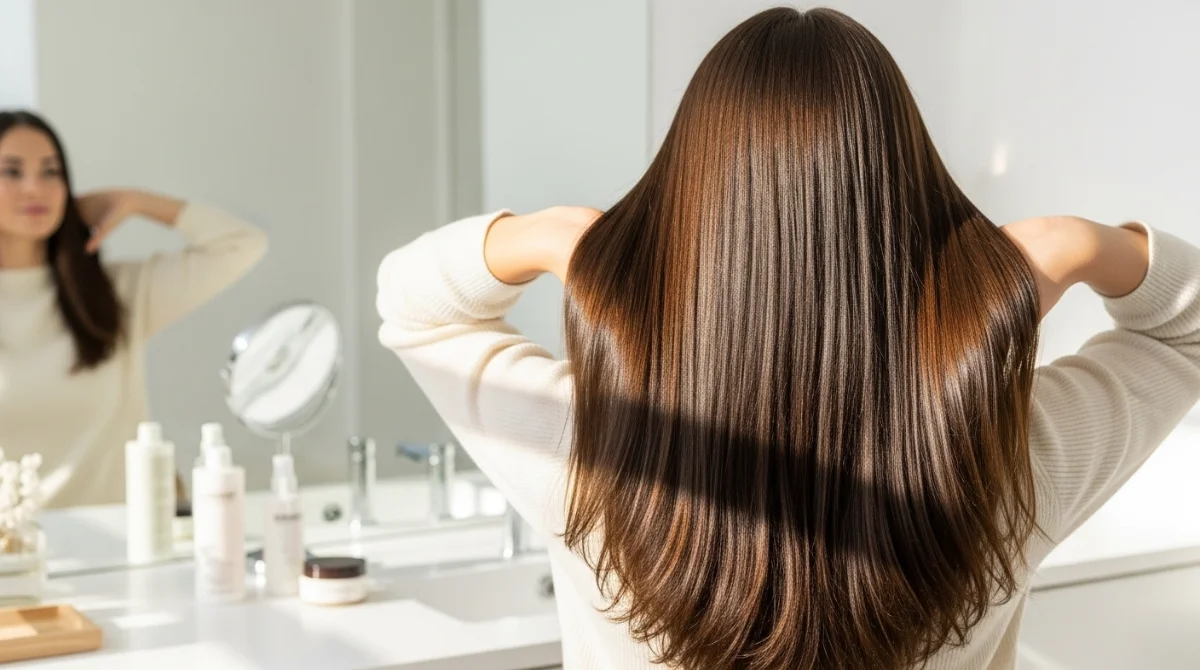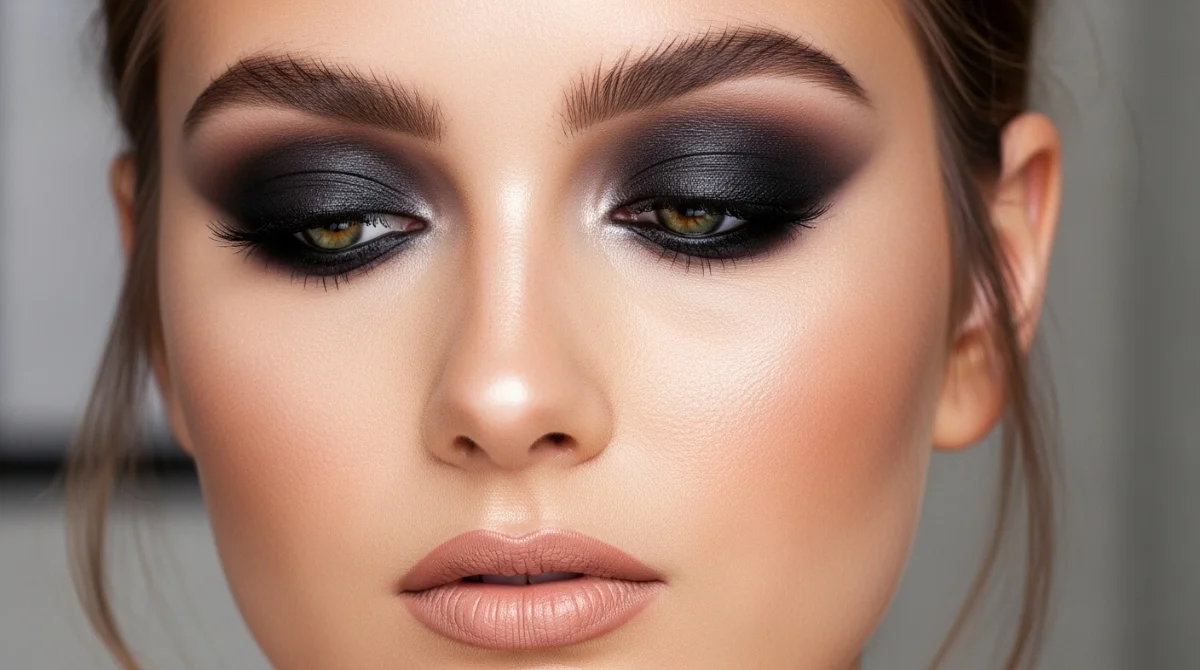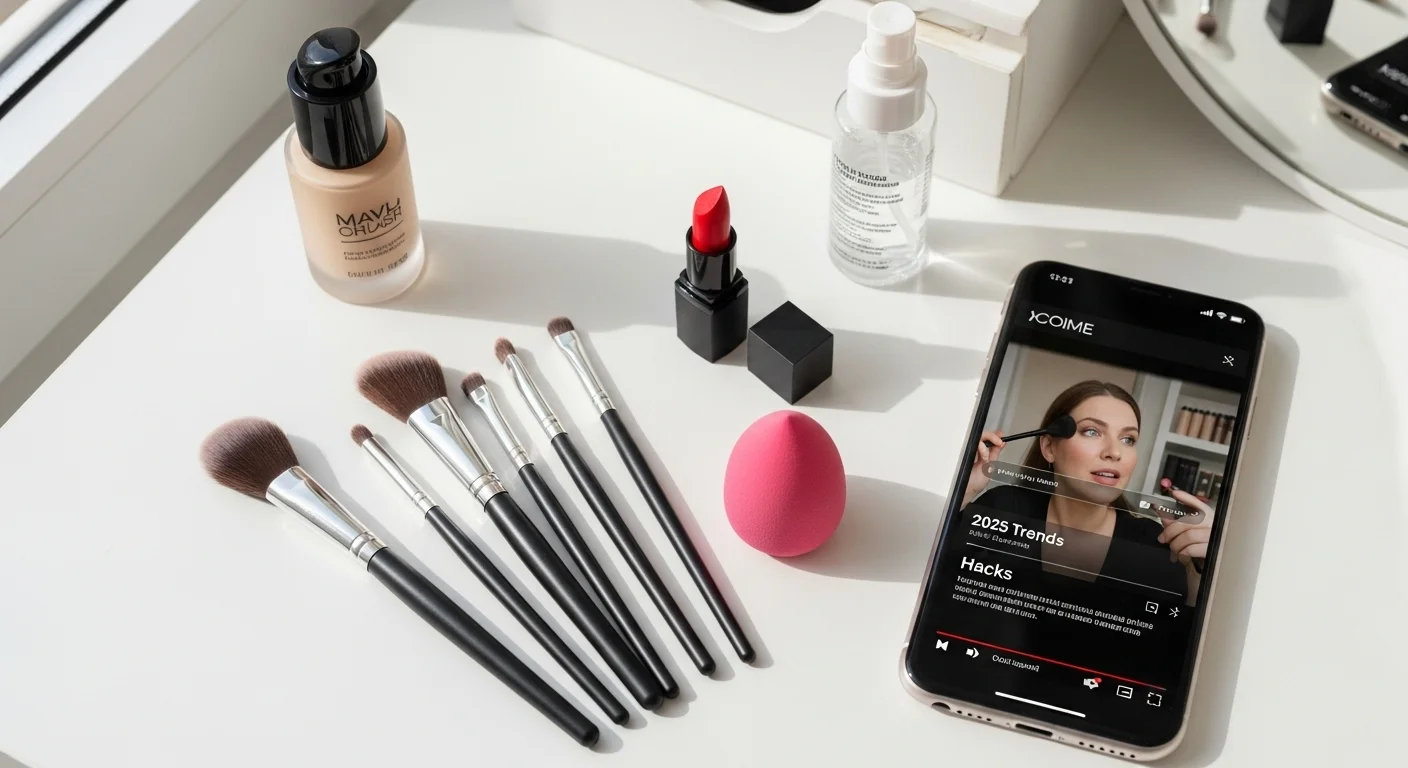Coarse hair can look bold, expressive, and beautifully textured every day. Many people still struggle with dryness, frizz, and tangles. This guide delivers complete coarse hair care knowledge today. You will learn identification, routines, ingredients, and styling. Everything here uses simple language and practical, proven advice.
Coarse Hair, Clearly Defined
Coarse hair describes strand diameter rather than total hair amount. Each strand is wider than fine or medium strands. Density means how many strands cover your scalp. You can have coarse strands with low overall density. Clear definitions prevent confusion and wasted product choices.
| Concept | What it means | How to check | What it affects |
|---|---|---|---|
| Strand texture (fine/medium/coarse) | Diameter of individual strands | Feel a single dry strand | Product weight, slip, detangling |
| Density (thin/medium/thick) | Number of strands on scalp | Ponytail size or scalp visibility | Bulk, cutting strategy, volume control |
| Porosity (low/normal/high) | Absorb and retain moisture capacity | Drying speed and moisture behavior | Hydration, sealing, protein balance |
Understanding texture, density, and porosity unlocks smarter routine building. Texture guides product weight and detangling methods precisely. Density informs haircut structure and bulk management strategies. Porosity directs hydration and sealing choices accurately. Together they explain why hair behaves differently.
Coarse Hair vs Thick Hair
“Thick hair” means many strands packed across your scalp. “Coarse hair” means each strand is physically wider. You can be thick but fine or coarse yet sparse. Keep these terms separate during product selection. Correct labeling improves results and expectations immediately.
Signs You Have Coarse Hair
Single strands feel robust between fingertips when tested gently. Individual hairs look visible against a pale background. Hair resists fine combs and prefers wide-tooth tools. Styles hold shape but may feel stiff when dry. Moisture and slip improve flexibility and shine.
Do I Actually Have Coarse Hair?

Confirm texture using feel tests and visual checks together. Compare one hair to sewing thread width carefully. Evaluate density using scalp visibility or ponytail thickness. Record findings and adjust products methodically. Consistent tracking reveals patterns and ideal routine choices.
A Quick Porosity Primer
Porosity shows how hair absorbs and retains water effectively. Low porosity resists moisture and accumulates buildup faster. Normal porosity balances absorption and retention fairly well. High porosity loses moisture quickly without sealing steps. Porosity often changes after color or heat services.
Why Hair Feels Coarse
Texture is largely genetic and varies among families significantly. Coarse strands contain more structural material than fine strands. That extra width influences flexibility, slip, and styling shape. They can appear frizzier without sufficient moisture. Balanced care improves feel without chasing unrealistic softness.
Genetics and Natural Texture
Any curl pattern can include naturally coarse strand diameters. Coarse fibers often feel strong yet slightly rigid sometimes. They need lubrication and slip for safe detangling. Gentle care prevents mechanical damage during styling sessions. Respect the strand and work slowly always.
Environmental and Chemical Factors
High heat weakens keratin and roughens delicate cuticles. Bleaching, relaxing, and repeated dyeing raise porosity quickly. For bold colour changes like burgundy hair colour, balance moisture and protein carefully to keep coarse strands soft.
Hard water leaves mineral deposits that block the entry of moisture. Strong sun also dries and fades exposed strands. Reduce exposure and protect hair consistently.
Hormonal and Age Changes
Graying hair often feels wirier and less flexible. Hormonal shifts can change oil levels and texture. Postpartum periods can sometimes cause temporary increases in shedding or dryness. Seek medical guidance for sudden unusual changes. Adjust routines gently while your hair stabilizes.
Core Principles of Coarse Hair Care
Moisture comes first, then balance with periodic protein carefully. Deep conditioning rebuilds softness and reduces friction significantly. Leave-in conditioner maintains slip between wash days effectively. Oils or creams seal moisture inside the fiber. Gentle cleansing preserves natural lipids and comfort.
Gentle Cleansing Strategy
Choose a sulfate-free shampoo when dryness is your primary concern. Concentrate on cleansing the scalp and root area. Let the suds run through the lengths without scrubbing roughly. Add co-wash days if your scalp tolerates them. Clarify only when performance declines noticeably.
Frizz Prevention and Cuticle Care
Use pH-balanced formulas that smooth cuticles during rinsing. Apply silicones or serums to reduce friction and puffiness. Layer leave-in before combing for safer detangling always. Protect from UV and wind with hats outdoors. Small steps together reduce frizz dramatically.
Detangling Coarse Hair Without Breakage
Work on damp, conditioned hair for maximum slip. Start from the ends and progress upward patiently. Use a wide-tooth comb or flexible detangling brush. Re-wet sections whenever snagging increases during passes. Consistency reduces breakage and knots over months.
Heat With Discipline
Keep temperatures moderate and limit repeated tool passes. Always apply a reliable heat protectant before styling. Diffuse curls on low speed and low heat. Allow hair to cool before touching or brushing. Schedule heat-free days to maintain elasticity.
Build Your Routine by Porosity and Curl Pattern
Personalize your coarse hair care using porosity and texture. Low porosity needs warmth and lighter layers for absorption. Normal porosity thrives on balanced moisture and protein. High porosity loves rich masks and careful sealing. Adapt methods to climate, lifestyle, and tolerance.
| Porosity | Cleanse | Conditioner / Mask | Leave-in | Seal / Oil | Styling | Weekly extras | Clarify cadence |
|---|---|---|---|---|---|---|---|
| Low | Mild shampoo with warm water usage | Heat-assisted mask using lighter creams | Lightweight milk for daily slip | Few drops of light oil sealing | Low heat with longer drying times | Steam or cap during masking sessions | Every three to four weeks |
| Normal | Gentle shampoo based on scalp needs | Balanced mask rotating moisture and protein | Cream leave-in with moderate slip | Light to medium serum or oil | Diffuse low or simple air drying | One deep mask each week | Monthly or when buildup appears |
| High | Very gentle shampoo or pre-poo first | Rich masks plus periodic protein boosts | Hydrating cream leave-in generously applied | Medium oil or butter on ends | Minimal heat with careful handling | Bond-building or protein as needed | Every two to three weeks |
Review this table and adjust volumes, not categories, first. Straight hair often prefers lighter textures overall. Curls and coils usually tolerate richer creams comfortably. Change one variable at a time for clarity. Keep notes after each routine for accuracy.
Straight and Wavy Coarse Hair Notes
Use precision layering to reduce bulk without losing movement. Prefer lightweight leave-ins to avoid greasy roots quickly. Smooth lengths using low heat and deliberate technique. Protect ends with small amounts of serum. Regular trims prevent expansion and split ends.
Curly and Coily Coarse Hair Notes
Hydrate with rich leave-ins and gels for definition. Use praying-hands or raking methods for even distribution. Diffuse gently or air dry without excessive touching. Explore protective styles to reduce daily manipulation. This supports coarse curly hair care well.
Wash Methods, Drying, and Night Protection
Condition before shampoo for slip on detangling days. Cleanse the scalp and rinse through lengths thoroughly. Condition again to restore smoothness and flexibility. Rinse cool to encourage cuticle laydown effectively. Style with leave-in and heat protection afterward.
Conditioner–Shampoo–Conditioner Flow
Start with conditioner to melt knots in sections. Shampoo the scalp carefully using gentle fingertip pressure. Reapply conditioner on mid-lengths for additional softness. Rinse cool and avoid rough towel friction. Finish with leave-in and a light seal.
Drying Without Extra Frizz
Squeeze water gently instead of twisting aggressively after washing. Hold the dryer farther to reduce hot spots significantly. Use lower heat and lower airflow for safety. Touch hair less while it sets and cools. Scrunch a few drops of serum at finish.
Night Routine That Protects Progress
Gather hair loosely to prevent tension and tangles overnight. Use a bonnet or silk pillowcase for reduced friction. Moisturize ends lightly before bedtime when necessary. Avoid tight elastics that strain delicate hairlines. Morning refresh becomes faster and easier.
Ingredients and Formulas That Help

Humectants like glycerin and aloe increase water retention effectively. Emollients like shea and argan add glide and softness. Proteins or bond builders support weakened, porous fibers. Choose fragrance-light formulas if your scalp is sensitive. Introduce changes slowly and observe consistent trends.
Moisturizers and Emollients Loved by Coarse Hair
Pair humectants with butters or lightweight oils for balance. That pairing improves softness without overwhelming greasy weight. Test quantities to avoid buildup and dullness. Concentrate richer products on mid-lengths and ends. Adjust seasonally according to local humidity levels.
Strengtheners and Protein Treatment Guidance
Use hydrolyzed protein or bond-building treatments periodically. Strength steps help colored or high porosity hair. Avoid overloading already stiff strands with protein. Alternate moisture and strength for ongoing balance. Track feel across several wash cycles carefully.
Scalp-Friendly Choices and Cleansing
Support scalp health with appropriate shampoo frequency decisions. Rinse thoroughly to remove residue from the skin. Consider medicated shampoos for diagnosed scalp conditions only. See professionals for persistent itching or scaling. Healthy scalps support healthier lengths long term.
What To Limit or Avoid
Avoid frequent high heat and harsh chemical services repeatedly. Be cautious with very astringent alcohols on ends. Minimize rough towel drying and aggressive brushing daily. Clarify only when genuine buildup affects performance. These limits preserve elasticity and shine.
Styling Coarse Hair With Confidence
Plan haircuts that manage bulk while preserving movement. Strategic layers help straight and wavy textures greatly. Curls and coils need shape-enhancing silhouettes thoughtfully. Ask stylists about density and diameter aware techniques. Your haircut should support desired styling routines.
Low-Manipulation and Protective Options
Choose twists, braids, or buns without excessive tension. Rotate partings to protect fragile edges regularly. Keep styles moisturized and clean as appropriate. Avoid leaving heavy extensions for prolonged periods. Prioritize comfort, scalp circulation, and sustainable maintenance.
Heat Styling That Respects the Fiber
Apply heat protectant before tools every single time. Work in small sections to limit repeated passes. Let hair cool fully before combing or touching. Schedule heatless days to restore softness steadily. Long-term results improve with consistent boundaries.
Special Situations You Might Face
Gray hair often needs extra conditioning and smoothing help. Men may want tailored beard and edge routines. Hard water and swimming raise dryness and roughness. Postpartum shifts can change oiliness and shedding. Adjust rinse steps and chelating as needed.
Coarse and Gray Hair Together
Gray strands can feel wirier and less flexible. Increase emollients and consider lightweight serums thoughtfully. Maintain trims to remove weathered, prickly ends. Protect from UV and heat diligently always. Patience and consistency improve feel significantly.
Men’s Coarse Hair Notes
Short cuts still require moisture and slip carefully. Use small amounts of leave-in to avoid buildup. Protect edges from tight hats or helmets. Keep beards conditioned, combed, and neatly shaped. Consistent grooming supports clean, tidy structure.
Swimming and Hard Water Considerations
Pre-wet hair and apply a light conditioner barrier. Rinse promptly after pools or ocean sessions thoroughly. Use chelating or clarifying occasionally when necessary. Follow with deep conditioning to restore softness. Replace lost moisture before resuming regular styling.
Realistic Routines You Can Copy

A quick weekday routine keeps frizz low and shine steady. Cleanse scalp, condition lengths, and apply leave-in carefully. Air dry partly and finish with low diffusing gently. Add serum to ends after complete drying. Expect manageable, polished results consistently.
Defined Curls or Coils Routine
Start with conditioner detangling and gentle cleansing afterward. Apply leave-in, then gel using raking motions evenly. Diffuse on low heat until nearly dry completely. Let casts form and scrunch them out later. Expect improved definition and reduced frizz.
Weekly Repair and Softness Session
Shampoo scalp thoroughly and squeeze out excess water. Apply a rich mask with optional gentle heat application. Rinse cool and seal with a light oil. Limit heat styling for several days afterward. Texture should feel smoother and stronger.
Common Mistakes and Myths
Skipping washes indefinitely rarely supports scalp health requirements. Balanced cleansing reduces itch, buildup, and odor effectively. Over-brushing wet hair increases breakage and frizz quickly. High heat without protection harms keratin structures. Correcting these habits brings steady improvements.
“Coarse Hair Can’t Be Soft” Myth
Coarse strands can absolutely feel soft and supple. The goal is flexibility, slip, and moisture retention. Consistent care builds softness across several weeks. Avoid extremes and track how hair responds. Progress comes from small, repeated habits.
Product Category Guide Without Hype
Match categories to goals and porosity thoughtfully always. Choose gentle shampoos when dryness drives your concerns. Use conditioners and masks that supply slip and moisture. Add leave-ins for detangling and daily softness. Reserve bond builders for damaged or porous cases.
| Category | Best for | Key ingredients to seek | How often to use |
|---|---|---|---|
| Shampoo or low-poo | Scalp cleanliness with minimal dryness | Gentle surfactants, soothing botanicals | One to three times weekly |
| Conditioner | Daily slip and softening benefits | Cationic conditioners, fatty alcohols | After every cleanse consistently |
| Deep mask | Intensive moisture or strength sessions | Butters, oils, hydrolyzed proteins | Weekly or biweekly as needed |
| Leave-in conditioner | Detangling and frizz control daily | Lightweight cationics, humectants | Daily or after every wash |
| Serum or oil | Sealing and shine at the ends | Silicones, argan, sunflower, squalane | Few drops on dry or damp hair |
| Heat protectant | Tool safety and smoother finishes | Film-formers, silicones, polymers | Every time before using heat |
| Clarifier or chelator | Removing buildup or mineral deposits | Chelating agents, stronger surfactants | Monthly or when performance drops |
A good routine uses categories, not endless product numbers. Start simple and observe clear changes. Increase richness only when dryness persists regularly. Reduce weight when the roots feel greasy quickly. Keep your notes updated after each washday.
Takeaway and Seven-Day Starter Plan
Begin with gentle shampoo, conditioner, and a dependable leave-in. Deep condition once this week for softness improvements. Seal ends lightly and avoid harsh towel friction. Sleep on silk or satin every night. Your coarse hair care results will build steadily.
Commit to modest changes and consistent tracking this month. Note porosity behavior and product weights carefully. Add protein only when softness begins collapsing. Protect from heat and sun whenever possible. This article is original and plagiarism-free.












